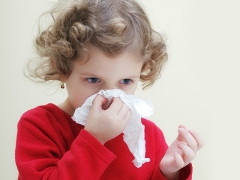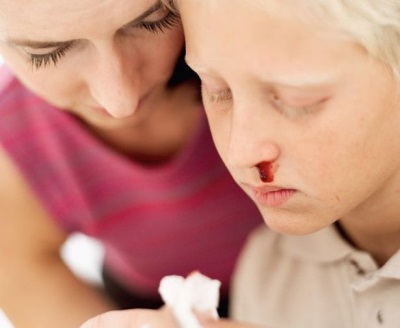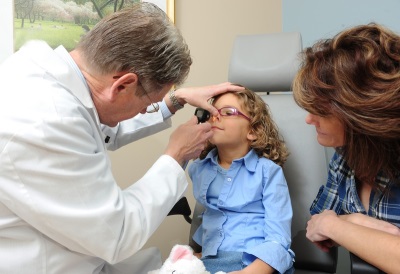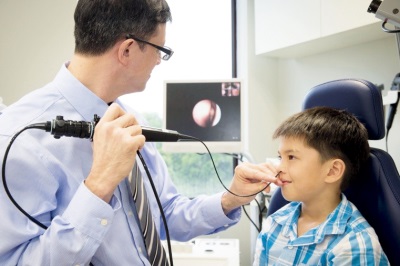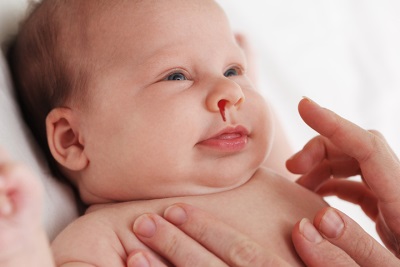Why does the child have blood from the nose and how to stop it?
Nosebleeds can begin at any age, but in children under 10 years of age, such trouble occurs more often than in adults. To some extent this can be explained by age-related features (a thinner and sensitive mucous membrane, close proximity of capillaries, their abundant network in the nose), due to which bleeding can occur even with minor damage, for example, if the child has hit his nose or picks nose to the blood.
However, childhood bleeding from the nasal cavity may be caused by more serious causes. Therefore, all parents should know why such bleeding is possible in children, how to quickly stop the blood, and how to act should not be.
Causes of nosebleeds in children
Doctors say that the blood from the nose in infants or preschoolers is five times more likely than in adolescents or adults. This may be a single episode, and often repeated bleeding. Doctors call it the term "epistaxis."
The most common cause of this bleeding is damage to the capillaries located in the lower part of the nasal septum. At the same time, blood is excreted mainly from one nasal passage.
To its appearance can lead:
- Strong tension. If the child sneezes or coughs, the thin vessels in the nose may be damaged, which will lead to the appearance of blood. In infants, the cause of damage to the blood vessels can be a strong crying.
- Viral or bacterial infection. When a cold that provoked an infectious pathogen, mucous membrane cells become inflamed, and the membrane itself is loosened. Due to inflammation, the vessels are located closer to the surface and may bleed.
- Frequent use of drugs with vasoconstrictor action. Such drugs with regular long-term administration cause atrophy of the epithelium of the mucous membrane in the nose, due to which the membrane becomes thinner and is damaged more easily.
- Frequent use of tampons to stop nasal bleeding or clear the nose. The situation looks paradoxical - when abundant nasal bleeding begins, the nasal passages should be tampered to compress the mucosal vessels, however, with frequent bleeding, cessation of blood circulation in the mucous membrane leads to insufficient oxygen and immune cells. The result will be mucosal atrophy and repeated bleeding.
- External influence on the cells of the nasal mucosa. Examples of damaging factors include burns and radiation sickness, as well as foreign objects in the nose, inhalation of toxic substances and trauma to the nose.
- Hereditary disease. An example of a disease manifested by bleeding from the nasal cavity is hemophilia. It disrupts the process of blood coagulation, and even with minor damage to the blood vessels, the bleeding will be quite long.
- Deformation of the septum. This anatomical feature often provokes regular bleeding.
- Prolonged inhalation of dry hot air, for example, if the child is in a hot climate or in a heated room. The dried mucosa becomes thinner and more sensitive.
- Neoplasms in the nasal cavity. They can be benign (angiomas, angiofibromas and polyps are quite common) or malignant. When they are damaged, blood is released from the baby’s nose.
- The problem with blood coagulation. The deterioration of coagulability, which is manifested by frequent bleeding (including nasal bleeding), occurs with hepatitis, anemia, inadequate intake of vitamin C and rutin, leukemia and other pathologies.
- High pressure blood. This pathology damages the blood vessels, resulting in possible bleeding.
- Elevated intracranial pressurecausing damage to the small vessels in the nose.
- Bleeding from another place. Blood can be released from the nose without damaging it, for example, if a child has bleeding from the esophagus.
- Hormonal changes. In adolescent girls, as a result of hormonal changes, edema of the nasal mucosa is often observed due to a greater blood flow.
Bleeding from the back of the nasopharynx
Most often (in 80% of cases), blood begins to flow from the vessels of the anterior part of the nasal cavity and flows out, frightening the child and parents. However, a more dangerous situation is bleeding, caused by damage to the vessels in the back of the nasopharynx. Such bleeding is harder to notice, so there is a risk of significant blood loss.
In a child with similar nosebleeds with pharyngoscopy, you can notice drops or streams of blood on the wall of the pharynx.
Other symptoms of these bleeding include:
- General weakness.
- Itching and tickling sensation in the nose.
- Noise in ears.
- Dizziness and headaches.
- The emergence of the urge to vomit.
Severity of nosebleeds
Depending on the severity of bleeding from the nose is:
- Easy Lost blood volume during such bleeding is small, and other symptoms may be absent or limited to pale skin, slight weakness, dizziness, dry mouth, and tinnitus.
- Moderate severity. In such a situation, the child loses more blood, which affects his state of health, manifested by considerable weakness, thirst, severe dizziness, shortness of breath, increased heartbeat, lower blood pressure. Sometimes with this bleeding occurs blueing of the skin.
- Heavy This bleeding due to significant blood loss leads to a sharp decrease in pressure, inhibition of the child, severe tachycardia. If you do not provide medical care, shock is possible.
What to do
In the case of a single case of bleeding from the nose, the child should be given a grit first aid and monitor its condition, paying attention also to the prevention of new bleeding. If a child has blood from the nose at night, the baby has fallen and his nose has swelled up or he has other symptoms of disease (for example, fever), you should consult a doctor.
Also show the child to a pediatrician when:
- Prolonged abundant discharge of blood from the nose.
- The appearance of blood foam.
- Faint
- Flowing clear blood fluid.
- The presence of a child of blood diseases, hypertension or diabetes.
The doctor will examine the crumb, measure the pressure and direct it to the examinations (complete blood count, coagulation test, biochemical and other tests), as well as a consultation to the ENT, if there is suspicion of a curvature of the septum, damage to the nasal mucosa, foreign body or bleeding from a child the back of the nasopharynx.
Depending on the cause of nasal discharge, the child will be prescribed treatment. For example, during erosion of the mucous, cauterization with silver nitrate is used. Many children with nosebleeds prescribed a course of ascorutin and calcium supplements. If necessary, use cryo - or laser therapy.
First aid at home
If a child suddenly starts to bleed from the nose, you need:
- Soothe the baby.
- Tell your child to breathe through his mouth and explain that it is impossible to blow his nose for the time being, and one should not swallow blood.
- To wash the child and remove the clots so that the affected vessels of the mucous membrane shrink more efficiently.
- Seat the baby or put the child with a slightly raised head.
- Open the collar or remove from the child clothes that interfere with calm breathing.
- Put a towel soaked in cool water or ice wrapped in a towel on the bridge of the nose or on the back of the head.
- Insert tampons wetted with hydrogen peroxide into the nasal passages. If there is no peroxide or tampons, it is necessary to squeeze the nose, pressing its wings to each other.
- If after 10-20 minutes the bleeding has not stopped, call an ambulance.
What not to do
When nosebleeds in children should not:
- Throw back the child's head. Such a rather frequent erroneous action of parents only increases the risk of blood entering the respiratory tract and the esophagus, provoking a cough and vomiting reflex.
- Allow your child to actively move or talk.
- Allow the baby to blow his nose.
What to do when nasal bleeding in infants
Most often, the excretion of blood in an infant is provoked by dryness of the mucous membrane or by a strong cry. If a child younger than a year from the nose began to bleed, you need to lift the baby so that the blood does not fall into the throat. Next, a cold is applied to the nose of the baby, and if the bleeding is too heavy or after a cold compress it has not stopped for 10 minutes, they call an ambulance.
How to prevent nosebleeds in children
- The air in the child’s room should be sufficiently humidified. For this, it is best to use a special device called a “humidifier”.
- Parents should ensure that the child does not place foreign objects in the nasal passages and does not put fingers into the nose.
- Do not overload the child, especially if he already had nosebleeds. It is necessary to avoid sudden movements, weight lifting, active games, a long pastime in front of the TV or at the computer.
- It is important to strengthen the immunity of the child, to walk regularly on the street, to encourage moderate physical activity, and also to enrich the children's diet with all the vitamins necessary for maintaining the integrity of the vessels, especially ascorbic acid and vitamin P.
- It is necessary to regularly visit the pediatrician with the child in order to identify diseases in which the risk of nasal bleeding is increased.
- If the cause of the blood is a runny nose, allergies, hypertension, or another disease, attention should be paid to the treatment of the underlying disease to prevent nasopharyngeal bleeding.
